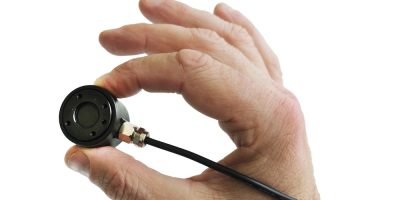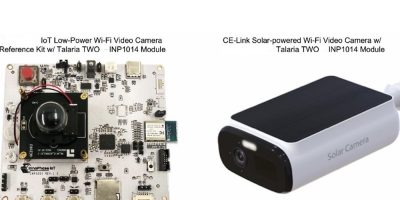A miniature, six-axis force-torque sensor unveiled by Bota Systems is the company’s smallest yet. The MiniONE is designed to enhance micro-robotic systems with haptic feedback. It is simple to install between a robot arm and almost any end of arm tooling (EOAT), said the company.
It weighs just 30g and has some dimensions of 30mm and a depth of 22.2mm, making it suitable for medical applications, product testing, as well as precision tasks like micro-assembly and micro-polishing. It is also suitable for use as a fingertip sensor in hands and grippers and in humanoid robots.
The MiniONE sensor provides a low noise signal with high sensitivity, said Bota Systems, together with drift performance and a design that includes temperature sensors and built-in filters, making it easy to program and set up.
Unlike competing products which need adapters or interface boxes, the MiniONE requires no external hardware, making it simpler to use, pointed out Bota Systems. By fully integrating the MiniONE’s electronics in its shielded housing, wiring, weight, complexity and measurement uncertainty are all reduced.
The MiniONE is dust- and water-resistant to IP67 and includes a USB communications interface. To save development time, it is available with Bota Systems’ software packages for ROS (Robot operating system), Matlab, Labview, TwinCAT and Python.
Klajd Lika, CEO and co- founder at Bota Systems, commented: “By giving robots the sense of touch, our sensors enable them to move as naturally and freely as people.”
A robotic force torque sensor measures force and torque when they are applied on its surface. By using the measured signals in real-time feedback control, robots can perform challenging interaction tasks. A six-axis sensor measures forces and torques on three axes each.
Robots are increasingly being used in more unstructured environments and are required to perform more demanding tasks and to collaborate with people, necessitating sensors to make them aware of their surroundings, explained Bota Systems. Force torque sensors enable them to perform previously impossible tasks, such as polishing on complex surfaces, robotic surgery, assembling delicate parts with tight tolerance, or carrying out interactive tasks in open environments.
The MiniONE six-axis force-torque sensor is compatible with a wide range of robot brands, such as Mecademic Robotics, Nachi Robotic Systems, Rokae and Yaskawa, as well as and gripper and hands from Robotiq, Shadow Robot and Schunk.
Bota Systems will be showing the MiniONE at ICRA, the IEEE International Conference on Robotics and Automation, from 29 May – 2 June 2023, in London, UK (booth I19).







